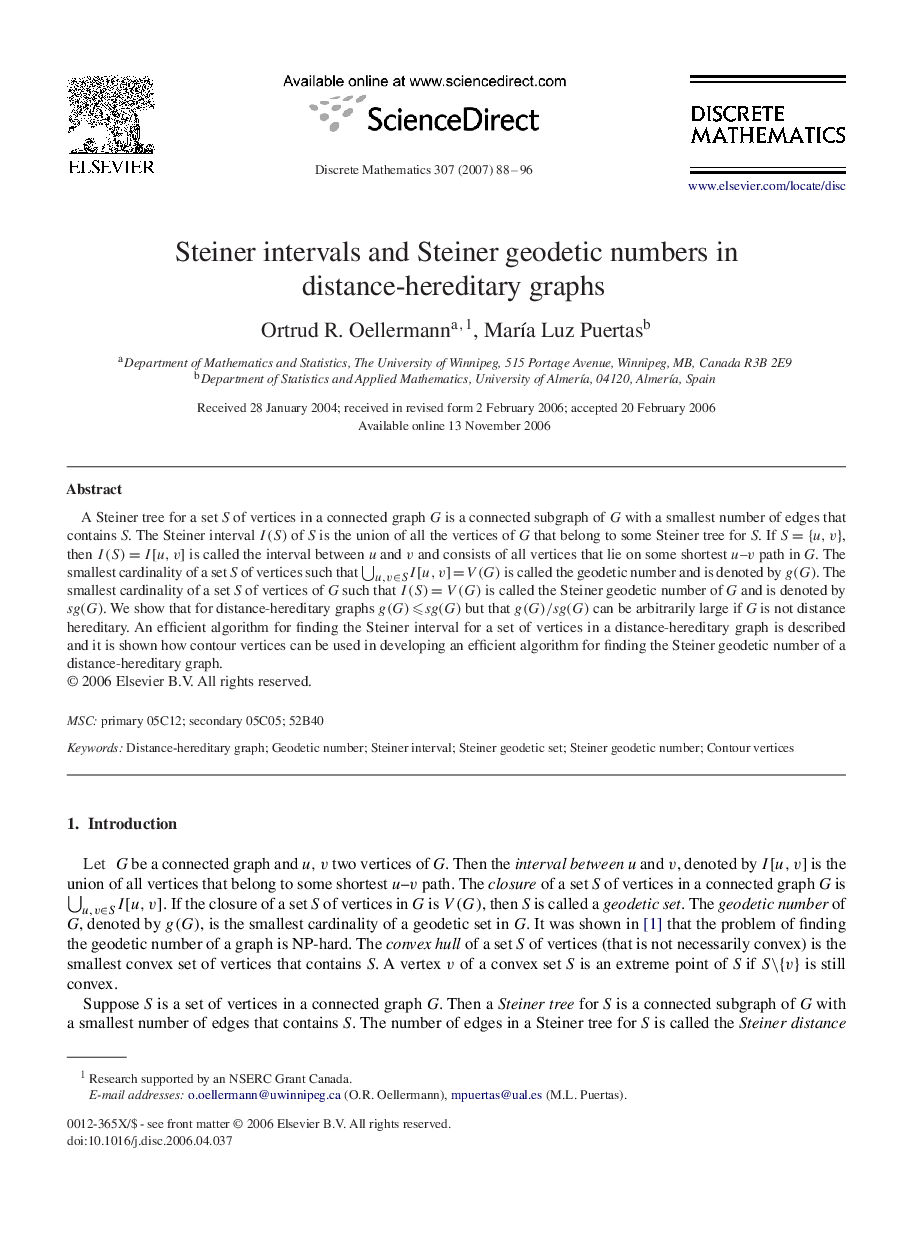| Article ID | Journal | Published Year | Pages | File Type |
|---|---|---|---|---|
| 4651100 | Discrete Mathematics | 2007 | 9 Pages |
Abstract
A Steiner tree for a set S of vertices in a connected graph G is a connected subgraph of G with a smallest number of edges that contains S. The Steiner interval I(S) of S is the union of all the vertices of G that belong to some Steiner tree for S. If S={u,v}, then I(S)=I[u,v] is called the interval between u and v and consists of all vertices that lie on some shortest u-v path in G. The smallest cardinality of a set S of vertices such that âu,vâSI[u,v]=V(G) is called the geodetic number and is denoted by g(G). The smallest cardinality of a set S of vertices of G such that I(S)=V(G) is called the Steiner geodetic number of G and is denoted by sg(G). We show that for distance-hereditary graphs g(G)⩽sg(G) but that g(G)/sg(G) can be arbitrarily large if G is not distance hereditary. An efficient algorithm for finding the Steiner interval for a set of vertices in a distance-hereditary graph is described and it is shown how contour vertices can be used in developing an efficient algorithm for finding the Steiner geodetic number of a distance-hereditary graph.
Related Topics
Physical Sciences and Engineering
Mathematics
Discrete Mathematics and Combinatorics
Authors
Ortrud R. Oellermann, MarÃa Luz Puertas,
